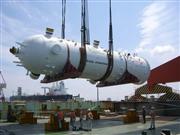Management:
 |
| Seven-Eleven creates excitements incessantly. |
The market leader Seven-Eleven worked out a
new strategy for further growth. The company focuses on the senior generation and
working women. It will open 1,600 stores in 2014 with an investment of 90
billion yen. Seven-Eleven has 15,800 stores in 42 prefectures at present and
37% share in terms of sales in 2012. With the 1,600 new stores, it plans to
increase the share to 40% in 2014. To develop the market for the senior
generation, it designates each store as the base of door-to-door delivery
service. It introduced Toyota’s COMS to increase the efficiency of the door-to-door
delivery service. It delivers such daily necessities as detergent and packed lunch
to the households of the aged.
Women account for more than 40% of shoppers
at Seven-Eleven stores, and Seven-Eleven successfully doubled the share of
shoppers older than 60 years old to about 20% in five years. Making the best
use of its delivery system, it started to deliver packed lunches to public
junior high schools in Kanagawa Prefecture. Seven-Eleven has daily average
sales of 668,000 yen per store, while the followers have average daily sales of
a little more than 500,000 per store. Surprisingly enough, only 1% of all
Seven-Eleven stores have daily sales of less than 400,000 yen, which barely
prevents a store from being closed. The strength of Seven-Eleven lies in the
ability to create original products unavailable from suppliers. Seven-Eleven
places more importance on value than on price and launches high quality
products that are little bit higher in price.
Japan has 50,000 convenience stores as of
the fall of 2012, and some industrial sources say that the market is saturated.
However, it is noteworthy that Seven-Eleven increased sales on a year-on-year
basis for 13 months consecutively up to August 2013.
As Seven-Eleven shows, it is not too much
to emphasize the importance of segmentalizing your market and focus on the
promising markets with investment. The world is changing fast, and every
business has to adapt itself to the change. As long as you develop new markets
and scrap obsolete markets, the word “saturation” will not irritate you.
Seven-Eleven regards a store as the base
of the door-to-door delivery service.
Shoppers get excited with Seven-Eleven's coffee.


